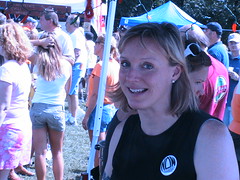Is it Suburban Spaces that Create the Problem?
CNN today has spent a great deal of its coverage on where we are two years after Hurricane Katrina. I have been listening to discussions of how well the President has made good on his promise to rebuild NOLA, how well Mayor Nagin is taking care of its citizens, how bad off the lower Ninth Ward continues to be and so on. Katrina continues to highlight the best and worst of American citizens; it introduced us to countless heroes while also underlying how poorly government addresses the plight of the poor. Katrina also reminded us of how much further we need to go before we can consider ourselves a color-blind society.
In one of the broadcasts, I caught Mayor Nagin say something that has stuck in my head for the last hour. It went something like this: "A city is only as strong as its people." That got me thinking a lot about an article that I read in graduate school by Iris Marion Young--I forgot the title--about how the city is an ideal space for imagining a community that not only handles difference, but thrives on it. (Maybe someone out there knows the title).
One of the more interesting points emerging out of the heated debates from my posts on social space and families with children is how much of our social spaces are commercial spaces. This is really true in suburbs, where you find a more homogeneous population in general. Dean Dad pointed out in the comments of my second post on social space and children that many folks, who have children or not, are willing to pay high taxes to fund their local schools in order to keep their property values up. This practice has the effect of keeping out a great deal of people who cannot afford to live in the suburbs. Hence, growing up in suburbia, like many of my students do (and I did!), leaves you with a skewed perspective on how widely people differ in how they live their lives. There is not a whole lot of diversity in suburbia.
I think that Young was onto something in thinking of the city--and I am sure she had Manhattan in mind--as the ideal form of social space that can teach more than mere tolerance of difference, but can inspire people to embrace it. Now, of course she was idealizing the city, and hell, few people can afford to live in Manhattan anymore anyway. But, I do think that urban places are far more capable of embracing difference--whether that includes Muslims, Gay couples, families with tiny children, childfree folks, Fundamentalist Mormons, Latinos, recent immigrants, etc. . . Urban spaces are more eclectic and accommodating. They have to be because there are so many different kinds of people in those spaces.
Perhaps the root of the problem of spaces is the manufacturing of suburban spaces?


|